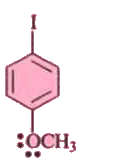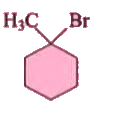A
B
C
D
Text Solution
AI Generated Solution
The correct Answer is:
|
Topper's Solved these Questions
HALOALKANES AND HALOARENES
AAKASH INSTITUTE ENGLISH|Exercise Assignment (Section - B ) ( Objective Type Question(One option is correct ))|36 VideosView PlaylistHALOALKANES AND HALOARENES
AAKASH INSTITUTE ENGLISH|Exercise Assignment (Section - C ) ( Objective Type Question(More than one options are correct ))|17 VideosView PlaylistHALOALKANES AND HALOARENES
AAKASH INSTITUTE ENGLISH|Exercise Illustration|6 VideosView PlaylistGENERAL PRINCIPLES AND PROCESSES OF ISOLATION OF ELEMENTS
AAKASH INSTITUTE ENGLISH|Exercise Try Yourself|33 VideosView PlaylistHYDROCARBONS
AAKASH INSTITUTE ENGLISH|Exercise Assignment(Section - C) (Previous Years Questions)|60 VideosView Playlist
Similar Questions
Explore conceptually related problems
Knowledge Check
Similar Questions
Explore conceptually related problems
AAKASH INSTITUTE ENGLISH-HALOALKANES AND HALOARENES -Assignment (Section - A ) ( Competition Level Question )
- The addition of HBr is the easiest with
07:00
|
Play - The reaction of chlorine water with propene gives
03:43
|
Play - which is more reactive nucleophile in polar protic solvent ?
09:15
|
Playing Now - Which is more reactive nucleophile in polar aprotic solvent ?
06:38
|
Play - CH(2) = CH - NO(2) + HBr to P, The major product P is
05:55
|
Play - CH(3) -CH =CH(2) + HOBr to P, The major product P is
03:18
|
Play - Complete the following reaction
03:10
|
Play - The reaction goes through
02:06
|
Play - Complete the following reaction
01:31
|
Play - Which of the following solvent is suitable for S(N)1 reaction ?
01:27
|
Play - The order of E(2) elimination for alkyl halide is
01:33
|
Play - Complete the following reaction
05:20
|
Play - Complete the following reaction
01:42
|
Play - CH(3)-CH =CH(2) overset(CI-I)(to) P,P is
03:48
|
Play - Complete the following reaction
02:57
|
Play - Which is most stable radial ?
05:10
|
Play - The reagent R is
01:42
|
Play - Complete the following reaction
03:07
|
Play - Product P (major ) is
03:48
|
Play - CH(3) overset(CH(3))overset(|)underset(CH(3))underset(|)(C) -Br overse...
06:13
|
Play

